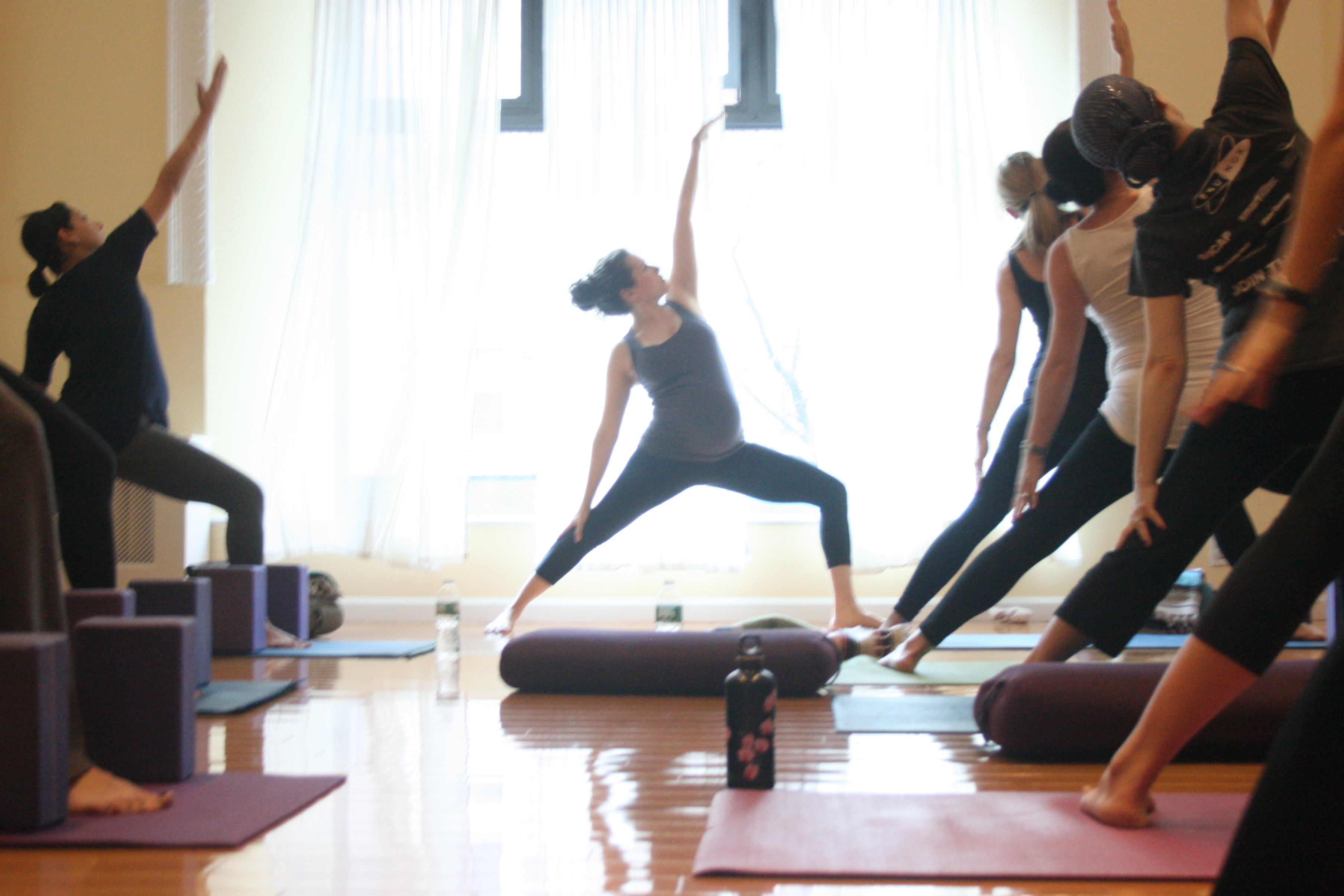I recently turned the corner into week 33 of my second pregnancy. What once seemed way off in the future now lies ahead like a big bright neon sign saying “Labor Impending!” Even though I have already been down this road before, there is a bit of anxiety surrounding my upcoming labor. My first birth was rather long and arduous, something I don’t want to repeat. I credit my ability to get through it to my support system but a huge factor was my yoga practice. I don’t think I fully grasped the lessons of conscious relaxation that my yoga practice informed me of until after giving birth.
Before diving into how my yoga practice prepared me for birth (and all of life’s discomforts), let’s look at the fear- tension- pain cycle that is often examined in a childbirth education class. When one feels fear, the body responds with the “fight or flight” reaction. Adrenalin is released and the person goes on “high alert.” This causes the blood vessels to constrict, heart rate elevates, muscles tighten, pupils dilate, and blood pressure increases. While all of these reactions are beneficial in responding to fear and the necessity to react to an emergency situation quickly, they are not welcome guests when one needs to relax and open. These natural responses create tension in the body which, when already encountering discomfort, increases one’s perception to pain. There lies the fear- tension- pain cycle.
In terms of facing childbirth, one way to start to remove the fear aspect is education. This includes educating and empowering one’s self with an understanding of the options available such as interventions, pain management techniques and available support. Once the fear is diminished, then there will likely be less tension during the experience and lessened perception of pain. Another important aspect to recognize is that removing the fear and being able to relax in the face of a challenging, or a not “every day” experience, is to practice the art of conscious relaxation. This is where my yoga practice has taught me far more then how to simply balance on my head. Yoga is meant to help still the fluctuation of the mind, it is not simply about creating the “perfect” downward facing dog. In fact, many of the poses are very uncomfortable and physically challenging. It is through these challenges that I learned to relax, calm myself and quiet my mind. Sometimes in my mind, I referred to it as “doula-ing” my way through a pose.
However, conscious relaxation takes a great deal of practice. Which is why so many people tout the success of Hypnobirthing. One of the theories behind the Hypnobirthing technique is to asks mothers and partners to practice scripts or scenarios where the mother can come into a relaxed state on a regular basis. The understanding is that sporadic practice will not bring enough familiarity to the learned skill of relaxation especially when facing emotional or physical discomfort.
In our prenatal yoga classes, we start and end each class with a guided relaxation. Sometimes we use techniques like “progressive relaxation” which is essentially talking the mother through relaxing her body, part by part, from the head down. By drawing her attention to these areas, the mind gets honed in and can concentrate on relaxing one specific body part at a time. Other times we may introduce mantras such as “Let go.” This is done by inhaling on the word “let” and exhaling on the word “go”. We also teach the mothers certain relaxing pranayamas (breath exercises) such as sama vriti pranayama. Which is matching the length of the inhale with the length of the exhale. Both these exercises focus on elongating the breath and focusing the mind, which will help ease the body and mind into a state of conscious relaxation.
After introducing these techniques to the mothers while they are in a relaxed, supported restorative pose, we remind them to call upon these exercises while in the more active and sometimes challenging poses. When the mother is holding virabhadrasana II (warrior II) for several breathes and her legs are starting to burn, we remind her to relax her breath and not tense up against the sensation. The mothers soon learn to diminish the fear around the intensity of the pose. This helps them raise their threshold of pain by finding familiar techniques to relax into the discomfort instead of fighting against what is happening. With regular practice, the expectant mother often feels more empowered and prepared to face labor and the roller coaster of motherhood.
As the days tick away and my husband and I slowly check off items from our “Baby Prep List,” I continue to pour myself into my yoga practice. I know that my most important task on our prep list is to work on facing the marathon of labor that lies in front of me. Each time I step onto the mat, I welcome the chance to connect to my breath, move through the asana (pose) and practice the art of conscious relaxation.







